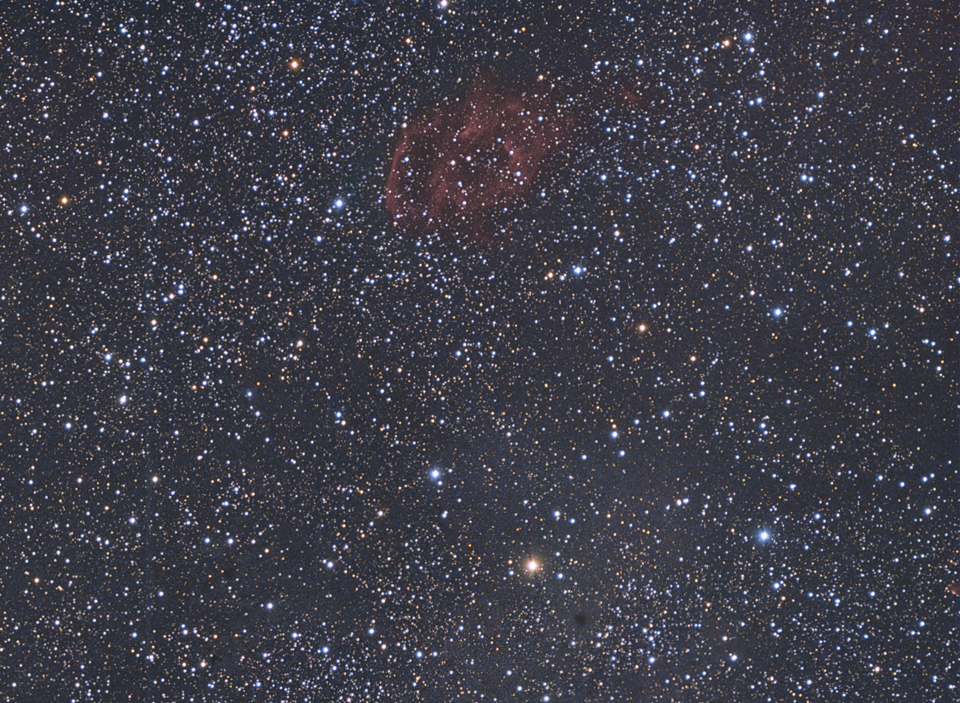Crop of Cassiopeia starfield showing SH2-180 and SH2-179
Characteristics:
RA (J2000): 00h 51m 51s
Dec (J2000): 61 degrees 25' 23"
Position Angle (Pinpoint): minus 37 degrees
Description:
The above image
was taken on three consecutive nights
of exceptionally transparent and clear skies in New England. It
is a
widefield view of a starfield in the constellation Cassiopeia that
contains a number of interesting objects, the most familiar being the
mixed emission and reflection nebulae IC 59 and IC 63, seen to the left
of center, riding above the bright star gamma Cassiopeia. Gamma
Cas
forms the middle star in the famous "W" shape of the Cassiopeia
constellation. It is an odd Be type variable with an extremely
fast
rotation rate, associated with loss of mass and significant changes in
brightness over the years. This highly luminous star is
responsible for
energizing the emission front of IC 59 and IC 63, causing it to glow
red in Ha light. Behind the emission front is the less energetic
reflection component that shines with predominantly blue light.
Also
seen in this starscape is the myriad of stars that populate the Milky
Way in this location, as well as bands of dust, several open clusters,
the faint emission nebula SH2-180, as well as the tiny planetary nebula
PLN 121+0.1 (associated with SH2-179). Feel free to check out the
links to larger images and to crops of areas of interest within this
star rich field. Rob Gendler's description of IC 59 and IC 63 may
be
found here.
Photographic
Details:
Date: September 19, 20, 21, 2009
Scope: Takahashi
FSQ106 at f5 on the Takahashi NJP
Mount
Autoguider: SBIG ST-402 with
60mm guidescope, focal length 227mm
Camera: STL11K -20C
Filters: Baader Ha,
LRGB
filter set; all 50.8mm
unmounted
Exposures: Luminance 180'; Ha 200'; R 60'; G 60'; B
120'.
Total
exposure 10.3 hours
Post-processing:
Calibrated, aligned, and Sigma Clip combined
in Maxim, followed
by DDP
in ImagesPlus (IP). Further processing in Photoshop CS (16
bit format)
Please
note: Graphics on this website may not be reproduced without
author permission.
Back to Nebulae
Home
